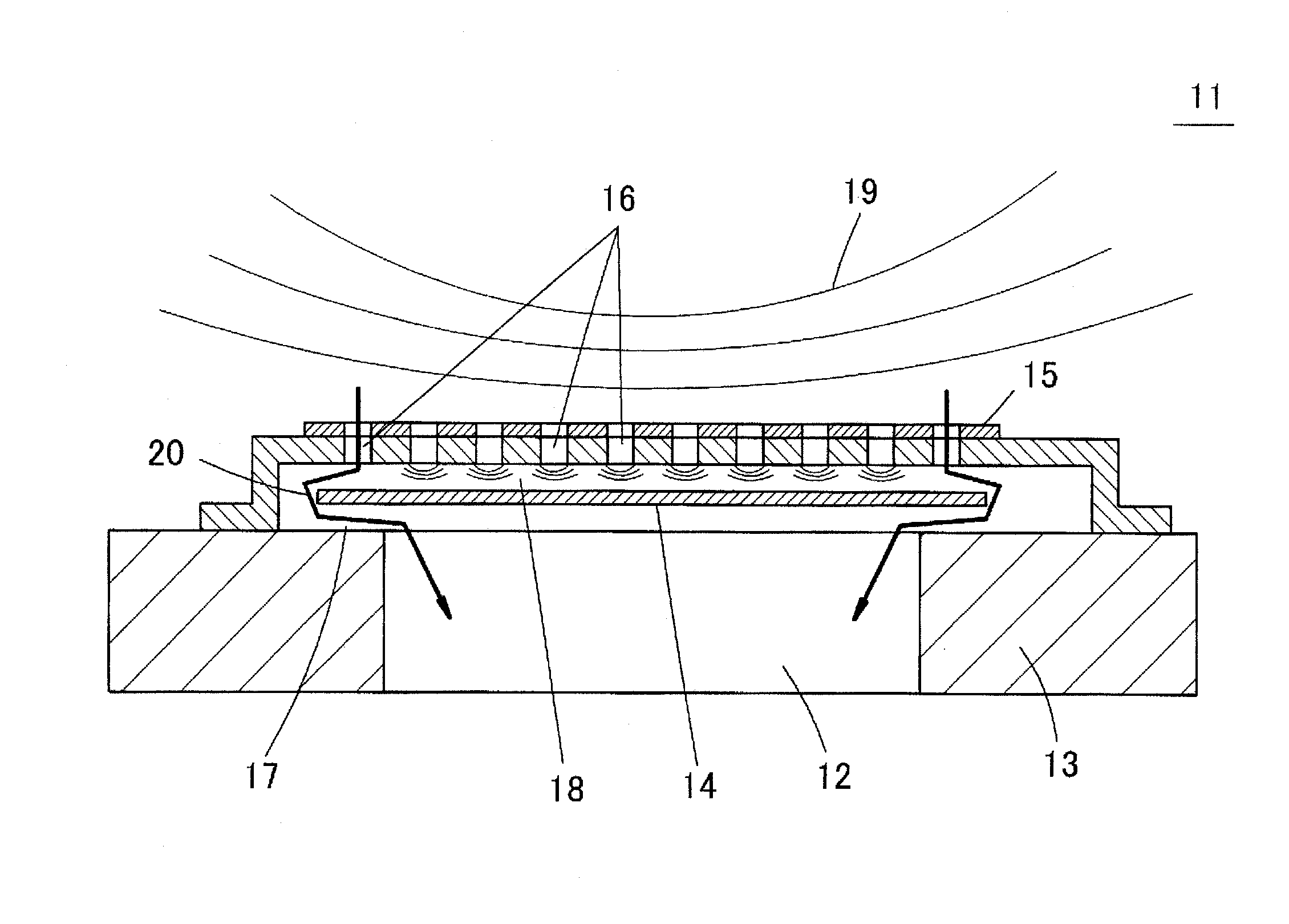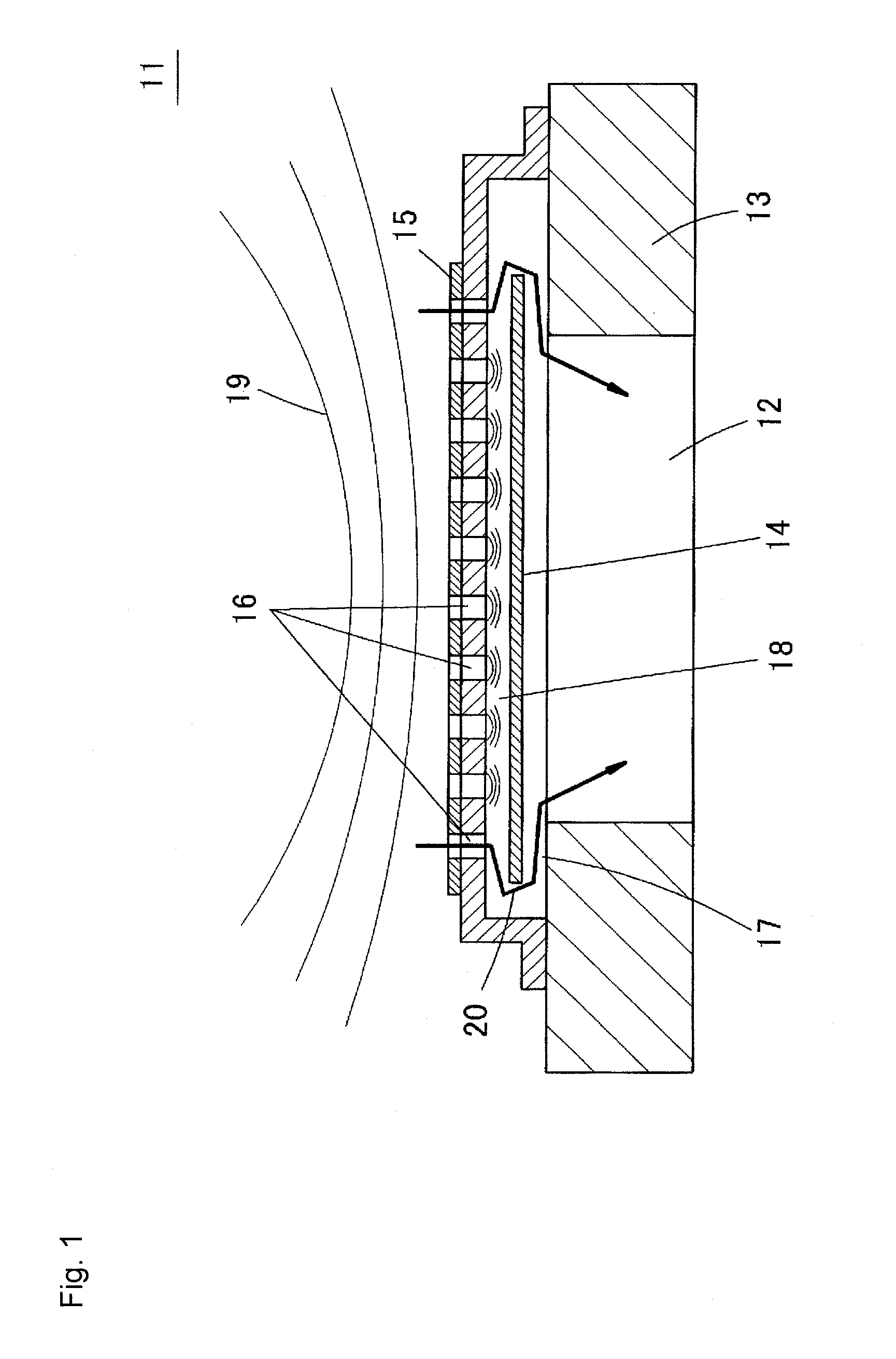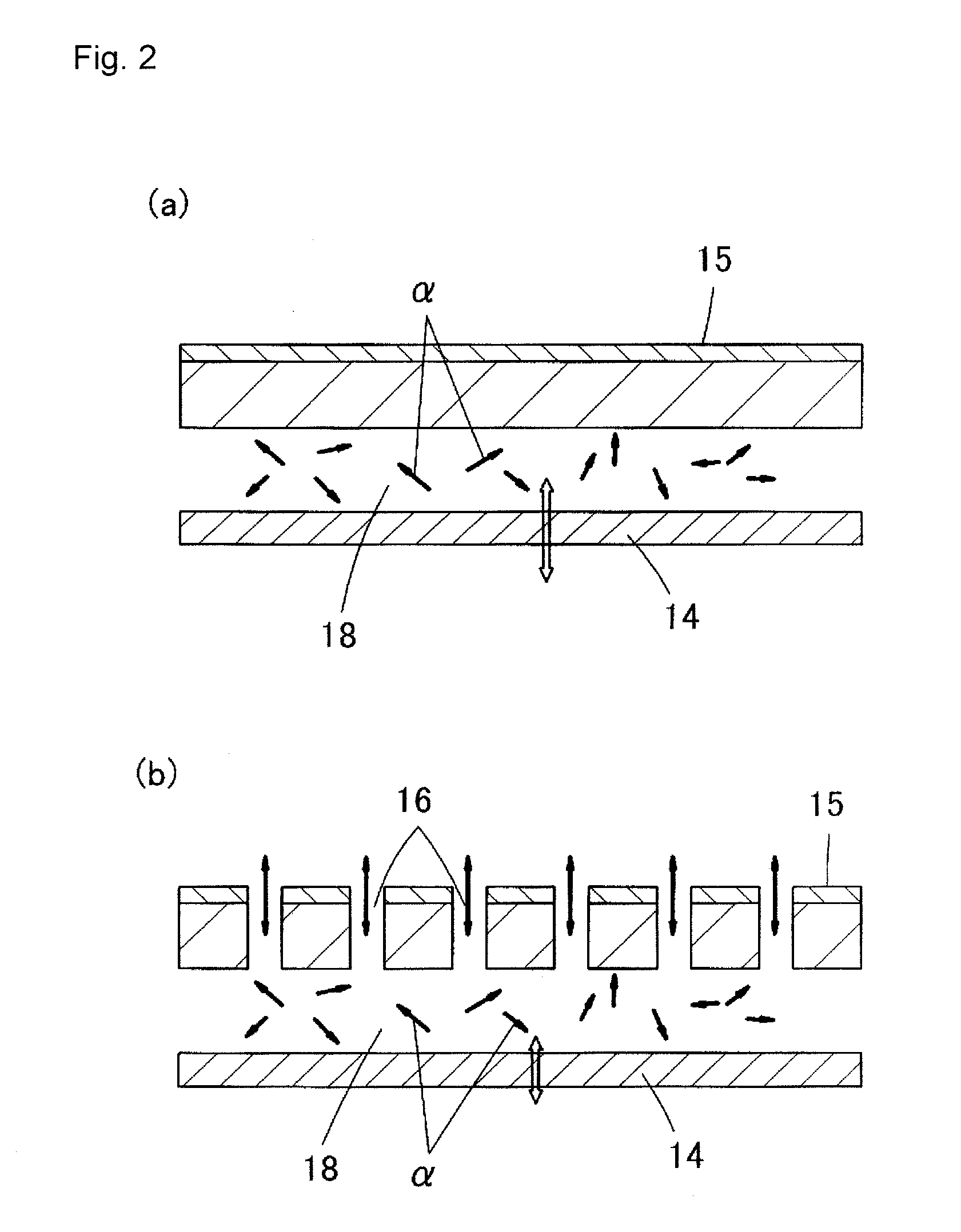Capacitance type vibration sensor
a vibration sensor and capacitor technology, applied in the direction of electrical transducers, semiconductor electrostatic transducers, instruments, etc., can solve the problems of low frequency vibration, degrade the s/n ratio of vibration sensors (microphones), and high sensitivity degrades
- Summary
- Abstract
- Description
- Claims
- Application Information
AI Technical Summary
Benefits of technology
Problems solved by technology
Method used
Image
Examples
first embodiment
Variant of First Embodiment
[0068]FIG. 8 is a cross-sectional view showing, in an enlarged manner, one part of the vibration sensor according to the variant of the first embodiment. In the variant, the air escape portion 42 is arranged so that the acoustic perforation 43 and the air escape portion 42 do not overlap each other when seen from a direction perpendicular to the vibration electrode plate 34. According to one or more embodiments of the present invention, the acoustic perforation 43 and the air escape portion 42 maintain a distance of a certain degree without contacting each other when seen from the perpendicular direction.
[0069]If the air escape portion 42 is arranged so that the acoustic perforation 43 and the air escape portion 42 do not overlap each other when seen from the direction perpendicular to the vibration electrode plate 34, the path length in which the low frequency vibration reaches the air escape portion 42 such as the path γ shown in FIG. 8 becomes long. The...
second embodiment
[0071]FIG. 9(a) is an enlarged cross-sectional view showing one part of the vibration sensor according to a second embodiment, and FIG. 9(b) is a plan view showing one part of the silicon substrate 32 positioned at the periphery of the hollow portion 37. In the second embodiment, the air escape portions 51, 52 are arranged in the substrate 42 at the positions where the vent hole 45 is arranged. The air escape portion 51 is a through-hole that passes through the silicon substrate 32 in the up and down direction, and the air escape portion 51 is a bottomed recess (i.e., hole with one side blocked).
[0072]In the case of the air escape portion 51 of through-hole shape, the noise by the thermal noise can be reduced without greatly lowering the acoustic resistance of the vent hole 45, similar to the air escape portion 42 of the first embodiment.
[0073]In the case of the air escape portion 52 of recess shape as well, the distance between the bottom surface of the recess and the lower surface...
third embodiment
[0075]FIG. 10 is an enlarged cross-sectional view showing one part of a vibration sensor according to a third embodiment, and FIG. 11 is a plan view of the silicon substrate 32 used in the vibration sensor. In this embodiment, an air escape portion 61 of groove shape is provided at the upper surface of the silicon substrate 32 so as to surround the periphery of the hollow portion 37 in the vent hole 45. In the illustrated example, two air escape portions 61 are arranged, but only one may be arranged or three or more may be arranged to an extent the acoustic resistance does not become considerably small. The groove of the air escape portion 61 does not necessarily need to be annular, and a linear groove may be formed along each side.
[0076]In such embodiment as well, the noise by thermal noise in the vent hole 45 can be reduced and satisfactory low frequency characteristics can be prevented from likely lowering, similar to the first and second embodiments.
[0077]The air escape portion ...
PUM
 Login to View More
Login to View More Abstract
Description
Claims
Application Information
 Login to View More
Login to View More - R&D
- Intellectual Property
- Life Sciences
- Materials
- Tech Scout
- Unparalleled Data Quality
- Higher Quality Content
- 60% Fewer Hallucinations
Browse by: Latest US Patents, China's latest patents, Technical Efficacy Thesaurus, Application Domain, Technology Topic, Popular Technical Reports.
© 2025 PatSnap. All rights reserved.Legal|Privacy policy|Modern Slavery Act Transparency Statement|Sitemap|About US| Contact US: help@patsnap.com



